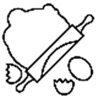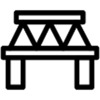- Home
- Curriculum
- Subjects
- Design & Technology
Design & Technology
Subject Aims
At St Edward’s CofE Primary School and Nursery, we encourage children to use their creativity and imagination, to design and make products that solve real and relevant problems within a variety of contexts, considering their own and others’ needs, wants and values. We aim to, wherever possible, link work to other disciplines such as mathematics, science, computing and art. The children are also given opportunities to reflect upon and evaluate past and present design technology, its uses and its effectiveness and are encouraged to become innovators and risktakers.
Our curriculum is supported by the DT Essentials ‘Projects on a Page’. They are consistent with the National Curriculum requirements and should be applied whenever children are designing and making products:
- User – children should have a clear idea of who they are designing and making products for, considering their needs, wants, interests or preferences. The user could be themselves, an imaginary character, another person, client, consumer or a specific target audience.
- Purpose – children should know what the products they design and make are for. Each product should perform a clearly defined task that can be evaluated in use.
- Functionality – children should design and make products that function in some way to be successful. Products often combine aesthetic qualities with functional characteristics. In D&T, it is insufficient for children to design and make products which are purely aesthetic.
- Design Decisions – when designing and making, children need opportunities to make informed decisions such as selecting materials, components and techniques and deciding what form the products will take, how they will work, what task they will perform and who they are for.
- Innovation – when designing and making, children need some scope to be original with their thinking. Projects that encourage innovation lead to a range of design ideas and products being developed, characterised by engaging, open-ended starting points for children's learning.
- Authenticity – children should design and make products that are believable, real and meaningful to themselves i.e. not replicas or reproductions or models which do not provide opportunities for children to make design decisions with clear users and purposes in mind.
The six essentials are embedded into the Project Planners, each of which has suggestions for users and purposes, and a list of authentic products that children could design and make. Each Planner has a star diagram that enables you to evaluate the overall potential of the project to ensure each of the D&T essentials has been addressed. Different projects will have a different profile. Schools may wish to evaluate projects in long-term planning to ensure each essential is adequately addressed over the course of a year or key stage.
The National Curriculum
The national curriculum for design and technology aims to ensure that all pupils:
- develop the creative, technical and practical expertise needed to perform everyday tasks confidently and to participate successfully in an increasingly technological world
- build and apply a repertoire of knowledge, understanding and skills in order to design and make high-quality prototypes and products for a wide range of users
- critique, evaluate and test their ideas and products and the work of others
- understand and apply the principles of nutrition and learn how to cook.
Pupils' skills and knowledge are developed across five key areas: structures, mechanisms, electrical systems, cooking and nutrition and textiles. Aside from Electrical Systems, which is KS2 only, each of these acts as the focus for a topic within each year group. Key skills and key knowledge for DT have been mapped across the school to ensure progression between year groups.
|
Textiles |
Electrical Systems
|
Cooking and Nutrition
|
Mechanisms
|
Structures
|
 |
 |
 |
 |
 |
Disciplinary Knowledge
Disciplinary knowledge is taught by giving children the opportunity to explore existing products evaluating these before following a design brief to design and make their own improved product. This ensures that our pupils think as designers.
|
Design |
Make |
Evaluate |
Technical Knowledge |
|
Know how to design a product that is purposeful, functional, and appealing to a specific group. |
Know how to cut, join, and finish a range of increasingly complex materials, ranging from paper to wood. |
Know how to investigate, evaluate, and analyse a range of existing products and their own designs based on a specific design criterion. In addition to this, children will know key individuals have helped to shape the world in which we live in. |
Know how to apply their knowledge of specific materials to meet the criteria listed above in the design, make and evaluate stages. |
EYFS
Design and Technology is encompassed in the EYFS through the Expressive Arts and Design element of Development Matters (2020).
Children in Foundation 1 explore their environment through child led and adult led learning. Explore different materials freely, in order to develop their ideas about how to use them and what to make. Children develop their own ideas and then decide which materials to use to express them. They also join different materials and explore different textures.
Children in Foundation 2 explore their environment through child led and adult led learning. Children safely use and explore a variety of materials, tools and techniques, experimenting with colour, design, texture, form and function. Children share their creations, explaining the process they have used. They will make use of props and materials when role playing characters in narratives and stories.
| Subject Documents |
|---|
| DT Progression Document |